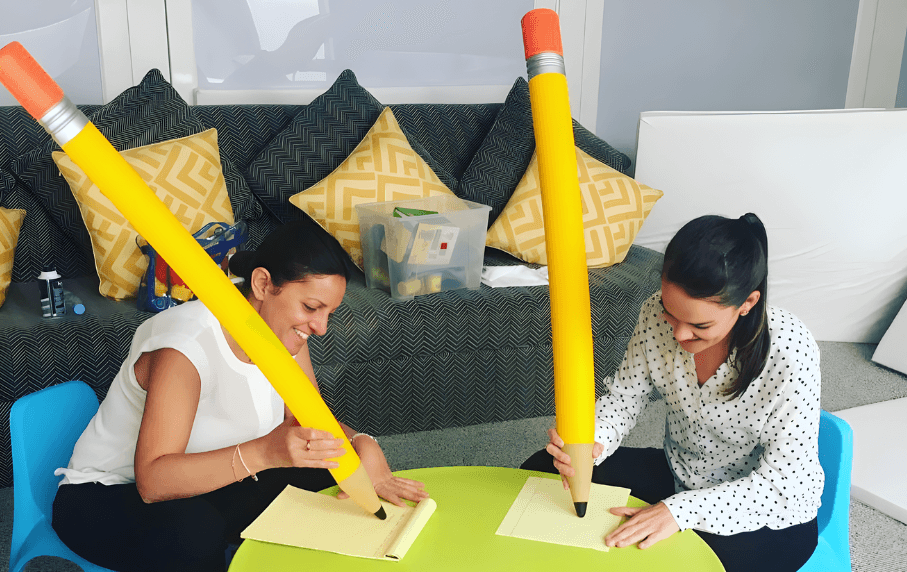
Finding effective ways to communicate with a child with special needs can be stressful and frustrating for both the parent and the child. Since few parents or guardians are trained as a speech language therapist, it’s unlikely that you will go into parenthood understanding the often-unique ways your child will try to express him/her self, or the best tips to communicate with your child with special needs.
When a child is not speaking, the adult will try to do anything to help but this often ends up with the adult speaking more and asking questions and, in turn, there is less space for the child to initiate communication and use language.
While other caregivers your child will encounter, such as special education teachers and speech-language therapists, will have the training, as a parent you have something very special and that is a bond of love; therefore, you have HUGE influence on the development of your child’s language and communication skills. The ideas presented here, while simple, when practiced consistently can have a considerable benefit for both you and your child. Below are five tips: try one a week and, once you feel confident with one try another, thereby building on your success.
1. Modeling language and teaching new words – As with so many things in life, children learn by example, whether behaviours (both good and bad) or communication skills. It’s important to remember that your child is watching everything you do – everything – as a model for them to follow. When it comes to speech (sounds made) language (words used), they not only listen, they also watch facial expressions and even your mouth, as a way to see how words are formed.
To help your child with special learn to speak more effectively, try to always face them when speaking and so they know you are attending to them. If they say something repeat it back to them and expand on what they say. This teaches your child that you are listening to them and have understood them. If your child uses a non-speech word, for example they refer to “milk” as dudu, use the adult word and not the baby word. This is how your child will learn new vocabulary.
2. Paying attention – Communication is a two-way street so, try to reinforce communication attempts that your child is making by maintaining eye contact, responding with speech, and imitating vocalizations using different patterns and emphasis. For example, raise the pitch of your voice to indicate a question (e.g., Child says: “Cookie!” Adult says: “Cookie? Want to eat cookie?”).
 3. Read, read, read – Reading to your child is a marvelous bonding experience, in addition to helping them discover language and learn new vocabulary. Sometimes, “reading” to your child is simply describing the pictures in a book without following the written words. Choose books that are sturdy and have large colorful pictures that are not too detailed, these are sometimes called board books.
3. Read, read, read – Reading to your child is a marvelous bonding experience, in addition to helping them discover language and learn new vocabulary. Sometimes, “reading” to your child is simply describing the pictures in a book without following the written words. Choose books that are sturdy and have large colorful pictures that are not too detailed, these are sometimes called board books.
Try to avoid questions and instead encourage your child to name what you point to by pausing and allowing them to say the word or make a sound. For example, if you are reading a book like Dear Zoo (by Rod Campbell), pause when you open the flap and say, “They sent me…” and see if the child will say the animal name. Use of gestures and facial expressions to will help your child understand different adjectives like big, small, scary, tall, and short.
4. Keep it positive – If your child says a word or sentence incorrectly, rather than correcting or asking your child to repeat it, just say the word/sentence back to him or her correctly to show you have understood their meaning. This way, your child always hears the correct version and will be more likely to use the correct version next time. Patience is truly a virtue here!
5. Never the wrong time to learn – Teaching language during routine everyday activities can be particularly effective since you are already doing something your child sees as “natural”. For example, rolling up sleeves and washing hands can be used to label items and actions, thus teaching language such as arm, hand, fingers, shirt, sleeves, on, off, water, soap, etc.
Play time is another opportunity for you to communicate with your special needs child because they are already focused on a behaviour, which can reduce distractions and they will motivated to attend. For example, placing a miniature man in a car and pushing the car can be used to teach car, in, drive, wheels, man, go, stop, etc.
Always encourage your child to imitate what you’ve said through songs and talking about what your child is doing. Point to things, name them, sing a song, or offer choices. You don’t have to set aside a specific time of day to learn language. Every activity is a language learning activity.
Of course, there are many more tips to communicate with your special needs child, far too many than can be offered in a blog post yet, this subject is also too important not to explore. If you’re wanting a bit more depth and understanding on how you can help young children with special needs learn to talk and communicate better, click here for my free handout: Tips to Encourage Expressive Language.
You can also learn the difference between talking and communicating with your child by reading this blog post.